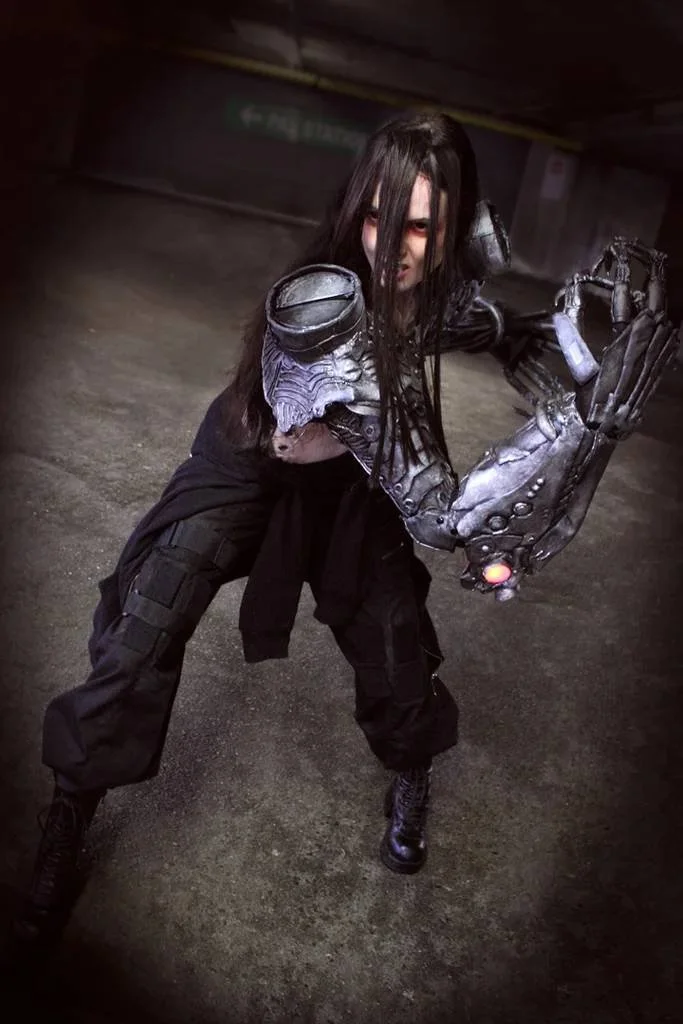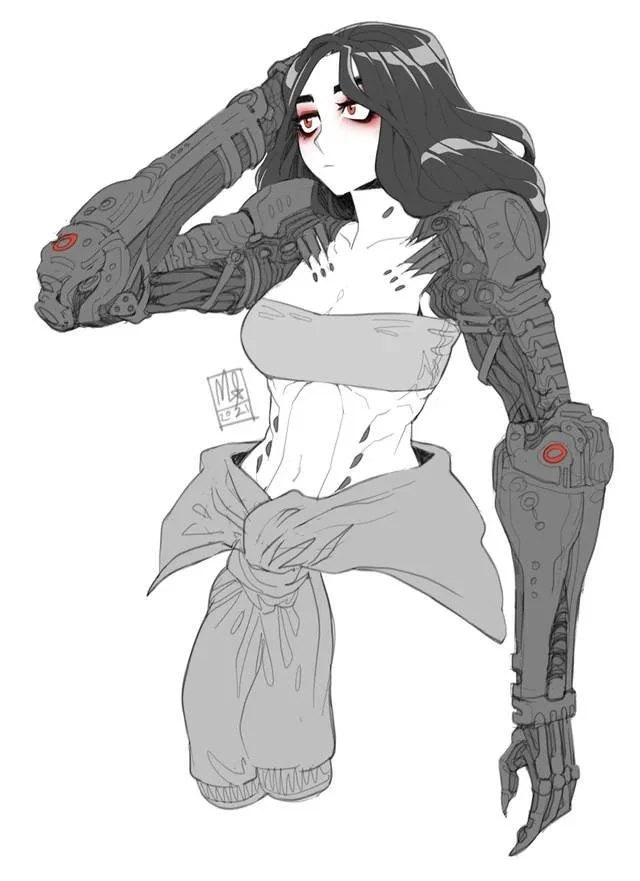The first version of Dragonfall was released as DLC to Shadowrun Returns. Its second release came as a standalone version as Shadowrun Dragonfall: Director’s Cut. There were a host of improvements with this re-release and among them were dedicated party missions that delved into something more personal from the party member’s pasts.
When it came time for quest design assignments for them, I was first in line to do Glory’s. There are a lot of wonderful and impressive characters across the Shadowrun games, but I believed then and still do now that Glory is something special, as do the fans. She has piles of art and cosplay and more than the odd comment written about her.
A large reason for this is the characterization and backstory by Andrew Macintosh and iconic character design by Chris Rodgers. Andrew did her intense and fairly dark backstory (wiki, opens a new tab) as part of his application Harebrained and it was so well received by the team she went into Dragonfall as a party member.
I don’t much care for suffering and darkness in characters when it's done solely to be edgy and/or exploitative. However, if characters with these elements are done with finesse it can make you empathize with their suffering and draw you closer to an unconventional and inherently memorable character.
We knew we were going to tap into this for her personal quest, but the question was how and what should we draw from to create a quest that did her justice?
Premise
At the initial meeting to establish the premise for the quest there was both trepidation and excitement. Glory’s backstory, everyone and everything in it, existed only in dialogue at that point and there was concern about what and how much to do.
I get creative breakthroughs in various ways, sometimes it's a slow boil and sometimes it's a bit more of a bolt out of the blue. At the meeting it was more of the latter. I had been reviewing all her dialogue and supplementary docs, so I did go in spun up. We started jamming in broad strokes and knew we wanted Harrow (wiki link, opens new tab) as the main antagonist in some form but then things shifted into what to cut in order to focus on what was most important to make the most of our efforts.
Thinking about all the elements of her story and what was the most important and what fans would expect for a favored character and I was basically not having it. Featuring only a small part of this wonderful backstory would be a disservice to the character, our fans and in the end ourselves.
Instead, my suggestion was that this was a “full boat” kind of thing and we don’t get to skimp. Vital in my eyes was doing justice to Harrow, Marta, the cult compound and even a visit to another realm to confront The Adversary (essentially The Devil in Shadowrun).
Our Creative Director, Mike McCain, was down with the goals but he wanted to know how we were going to structure that into a coherent package that would justify the resources required.
I landed on the idea of a points based gate in the form of confronting Glory’s former girlfriend Marta in dialogue leading to different difficulties vs Harrow and different narrative outcomes. We came to call these points “Marta Points” and scoring them in a confrontation conversation was enabled by being brave and exploring the cult compound and pushing into Glory’s past.
To get all the options and to get the most points in the Marta conversation was not easy or comfortable, but confronting Glory’s past was never going to be.
After confronting Marta, you could advance to the final confrontation vs Harrow. Once reaching him you could decide to choose a path of healing or of vengeance. If you choose healing you purify a corrupted spirit and save some yet to be corrupted Initiates, but Harrow escapes. If you choose vengeance Harrow is killed but at the cost of the Initiates lives and maybe a part of Glory herself?








